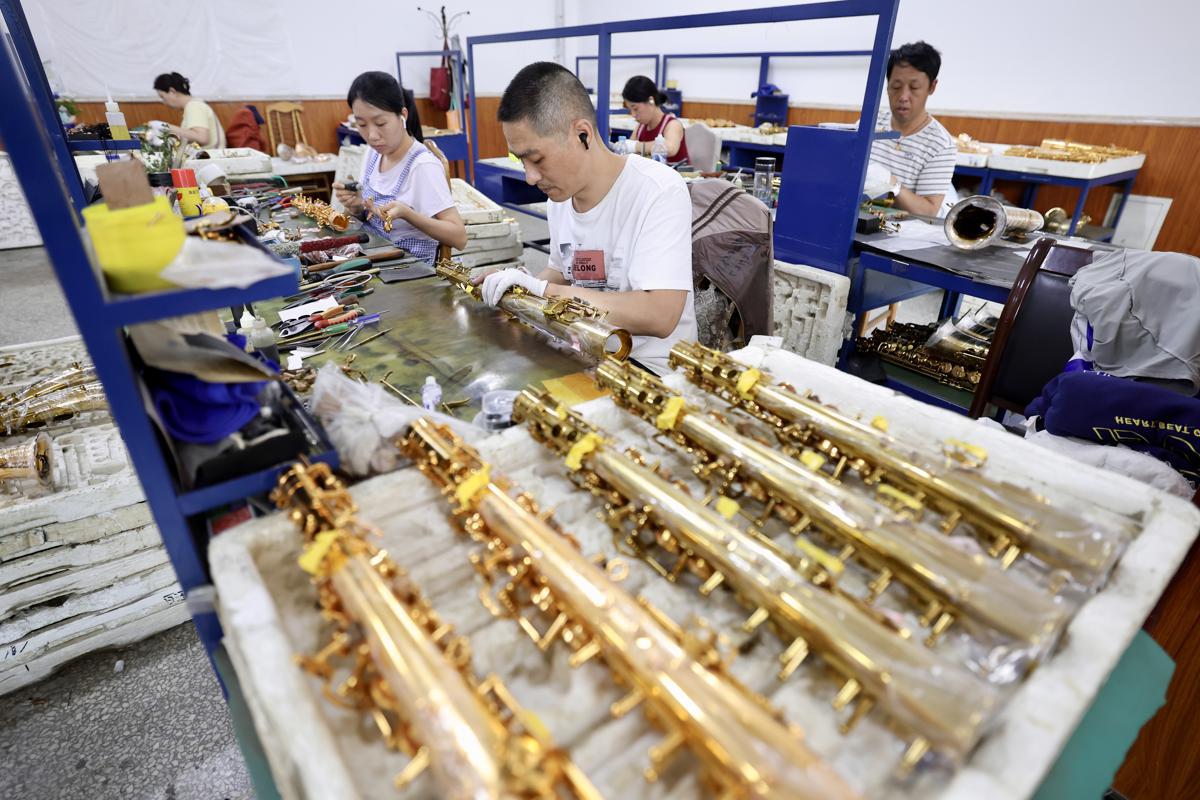Visit China: Tianjin town dominates global wind and brass instrument market


Since 2010, automation has boosted efficiency. "Currently, we have over 100 intelligent production machines," Ma said. Inside Oves' workshop, workers weld, polish, and assemble instruments under the watch of technicians managing multiple machines.
Liu recalled the industry's evolution. "In the 1970s, our instruments were distributed around the country through cultural stations. Many schools used our youth horns, and the military used our bugles. Later, with economic development, we shifted towards high-end customization and also started producing musical instrument-related crafts, which sold well."
Caigongzhuang's rise mirrors China's economic transformation. In the 1960s–70s, a small parts factory in the town supplied State-owned firms. The 1980s brought international OEM orders, and by the 1990s, local brands emerged. After 2000, collective enterprises privatized, spurring today's 114 music-related businesses — 51 manufacturers and 63 wholesalers/retailers — explained Wang Han, director of the economic development office of Caigongzhuang.























